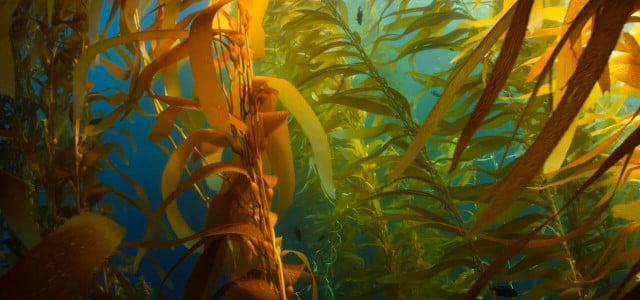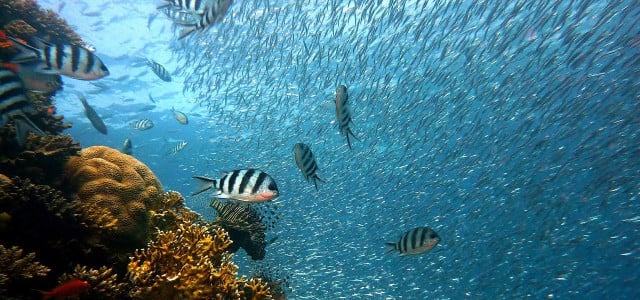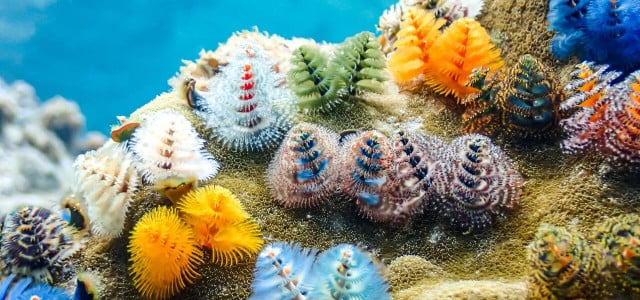You may not love swimming through it, but ocean seaweed plays a vital role in the environment. Read on for the impacts, benefits and culinary varieties of seaweed.
Even though it may look similar, ocean seaweed isn’t just the marine version of land plants. Seaweed is a type of algae, a diverse group of photosynthetic organisms across several evolutionary lines. While many algae are single-celled, seaweed refers to the visible plant-like algae we’re familiar with.
Seaweed grows in saltwater all over Earth’s oceans and requires sunlight for photosynthesis. Many float in dense colonies in the open oceans. However, most make their home in shallower coastal waters where sunlight can penetrate. Seaweed is divided into three sorts based on its algae family:
- Red algae: Known for having several culinary varieties.
- Green algae: Diverse group with several microscopic examples; all land plants descend from green algae.
- Brown algae: The most common, known for large cold-water seaweeds like kelp.
Cyanobacteria (blue-green algae) is sometimes called seaweed but is a single-celled organism that forms algal blooms or moss-like colonies. Likewise, seagrasses are not algae either, but land plants that are adapted to live in saltwater.
Environmental Benefits of Ocean Seaweed



(Foto: CC0 / Pixabay / Jackdrafahl)
Ocean seaweed doesn’t have the best reputation: an unsightly litter drying on beaches or a suspicious nuisance when swimming. Yet seaweed plays a critical role in marine ecosystems and the global climate:
- Seaweed is a carbon sink: like mangroves, seaweed can sink and lock up its carbon on the ocean floor rather than releasing it back into the air during decomposition.
- Marine algae (including seaweed) produce 70 percent of the world’s oxygen.
- Algae is the foundation of the oceanic food chain: all ocean life depends on it.
- Seaweed, particularly free-floating species, provides shelter for animals in the open ocean.
- It absorbs contaminants and heavy metals to keep ocean water clean.
Ocean Seaweed Health Benefits
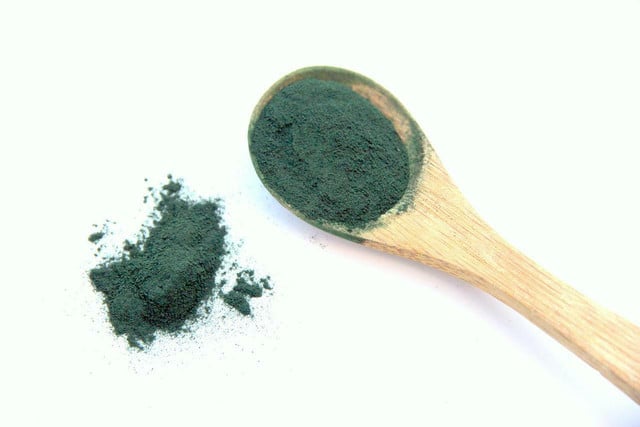


(Foto: CC0 / Pixabay / Nouchkac)
Incredibly, only a handful of cases of seaweed toxicity have ever been recorded. All of these were linked to a few species of cyanobacteria (which isn’t real seaweed) or seaweed rotting on the beach. Not only is nearly all ocean seaweed nontoxic, but many have significant health benefits:
- Most seaweed is incredibly high in fiber, often more than fruits or vegetables
- It contains large amounts of vitamins and minerals
- High in iodine, which is linked to thyroid health
- Ocean seaweed may lower cholesterol
- It is high in antioxidants
That said, ocean seaweed does tend to absorb contaminants in the water (heavy metals in particular), so be wary of the source of your seaweed.
Common Ocean Seaweeds
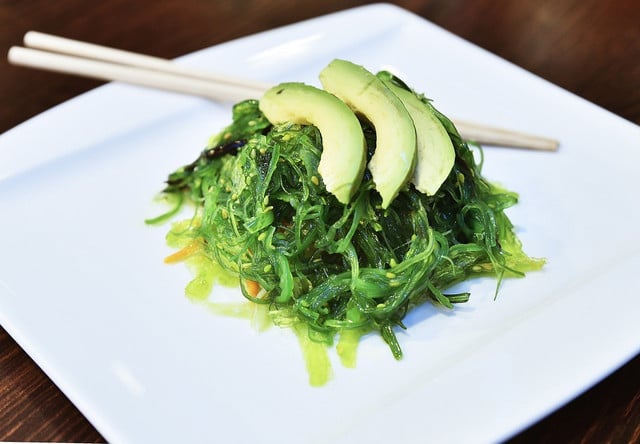


(Foto: CC0 / Pixabay / zuzyusa)
Though seaweed isn’t common in western cuisine, it is widely used in Asian cuisine. It’s also in pharmaceuticals, cosmetics, fertilizer and animal feed. Here are some common seaweeds you may find growing on either coast of North America:
- Ogonori: Pacific red algae often used to make agar agar
- Irish Moss: Atlantic red algae related to ogonori with similar gelatin-like properties
- Nori: Pacific red algae commonly dried into crunchy mats for veggie sushi rolls or vegan onigiri
- Wakame: Pacific brown algae commonly used for seaweed salads
- Kombu: Pacific brown algae often used in soup stock, salads, and ramen broth
- Kelp: Brown algae that makes up kelp forests on the Pacific coast
- Sea Lettuce: green algae commonly found on beaches worldwide
- Spirulina: tropical cyanobacteria, now grown in artificial ponds and dried as a powdered superfood (tip: check out the difference between chlorella and spirulina.)
- Sargassum: free-floating Atlantic brown algae that commonly washes up in huge quantities
Ocean Seaweed Farming
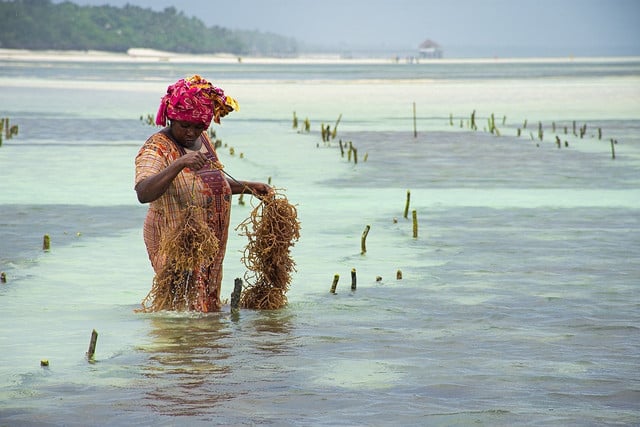


(Foto: CC0 / Pixabay / aga2rk)
Although foraging for wild seaweed is still the dominant practice in Europe, most of the world’s seaweed is farmed in Pacific Asia. Seaweed is usually grown attached to ropes or netting in shallow depths and is then harvested by hand. Ocean seaweed farming also offers a far more sustainable alternative to land agriculture: it doesn’t require extra water, fertilizer or heavy machinery.
Additionally, the seaweed farms can filter water and provide a habitat to marine creatures looking for shelter. This means that seaweed farming has growing potential for feeding a larger population and mitigating climate change.
Read more:
- Coral Bleaching: Why Reefs Are Dying – and How to Help
- What Are Dead Zones in Our Oceans?
- These 7 Surprising Items Release Microplastics into the Ocean
Do you like this post?






